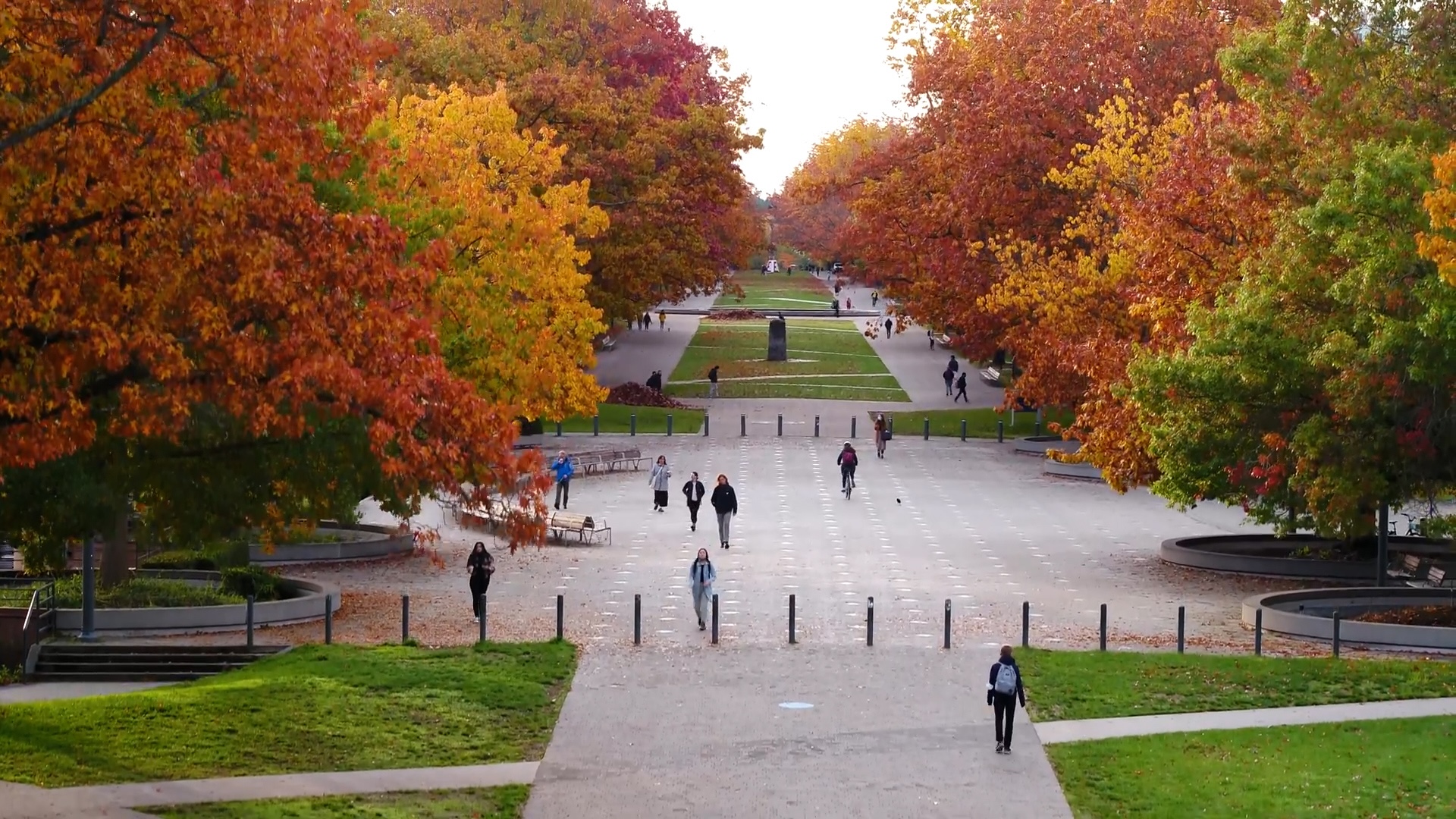How trees recycle nutrients to produce their autumn colours
October 16, 2025

October 16, 2025

The leaves have turned in the northern hemisphere and the Lower Mainland is seeing its blaze of glory.
But what science is at work behind these chameleon leaves, and why does B.C. put on a dimmer show than other provinces? UBC botanist Dr. Santokh Singh explains, and highlights his favourite leaf-viewing spots.
The scientific term is leaf senescence: biochemical and molecular changes that start in early or mid-September that change the leaves’ colour from green to orange, yellow and red. It’s actually the plant recycling its nutrients.
Leaves are green during spring and summer due to chlorophyll, used to convert sunlight into energy for the plant via photosynthesis. As autumn approaches, the plant begins to break down larger molecules including the chlorophyll and proteins in the leaves. It recycles or remobilizes the resulting, more easily movable, nutrients and energy reserves into its roots and branches. These play an important role in the plant’s survival during its dormant period during the winter, as well as for the spring period of regrowth the following year.
As the green chlorophyll degrades, other pigments are revealed, such as the yellow xanthophyll, the red and purple anthocyanins, or the yellow, orange and red carotene.
Due to warm night temperatures in early fall, the intense leaf colour change has been a bit late this year. We tend to see peak colour change in the Lower Mainland around mid-October.
To see an intense change in colour, night temperatures need to be lower and the days need to get much shorter, signalling to the tree that winter is coming. And if the days are also sunny—not rainy or overcast—those are ideal conditions. Rain seems to lead to more subdued leaf colour change, perhaps due to clouds blocking more of the sunlight required for metabolic changes in the leaves.
Some of the reasons for trees displaying more vibrant leaf colours in some parts of B.C. or other provinces could be that these trees are growing under optimal weather conditions including the right temperature, amount of rainfall and length of day.
Some of these trees could also be more resistant to environmental stresses. For example, many drought-resistant trees, such as some oak and dogwood species, require much less water for their growth and development.
Leaves of most coniferous trees generally stay green and don’t change colour in the fall season. However, most deciduous trees display a wide array of leaf colours in the fall season. The regions in Ontario and other provinces that show more vibrant fall leaf colours might be due to a wider variety of deciduous tree species.
My favourite spots for viewing the fall leaf colours are: UBC Vancouver campus, Stanley Park and the seawall, VanDusen Botanical Garden, Queen Elizabeth Park, the Burnaby mountains, the Butchart Gardens on Vancouver Island, and the Okanagan region.
It gives me a huge amount of happiness to see how nature is working and how these plants are responding to changes in weather and the climate. Plants are wonderful: They can’t move, so they adapt to their immediate surroundings. They mine nutrients from the soil through their roots and with simple things like carbon dioxide, water and sunlight, they make all the nutrients they need for their growth and development. And then they recycle them, through senescence, and through leaf mulch, providing nutrients back to the soil surrounding the roots.
We honour xwməθkwəy̓ əm (Musqueam) on whose ancestral, unceded territory UBC Vancouver is situated. UBC Science is committed to building meaningful relationships with Indigenous peoples so we can advance Reconciliation and ensure traditional ways of knowing enrich our teaching and research.
Learn more: Musqueam First Nation